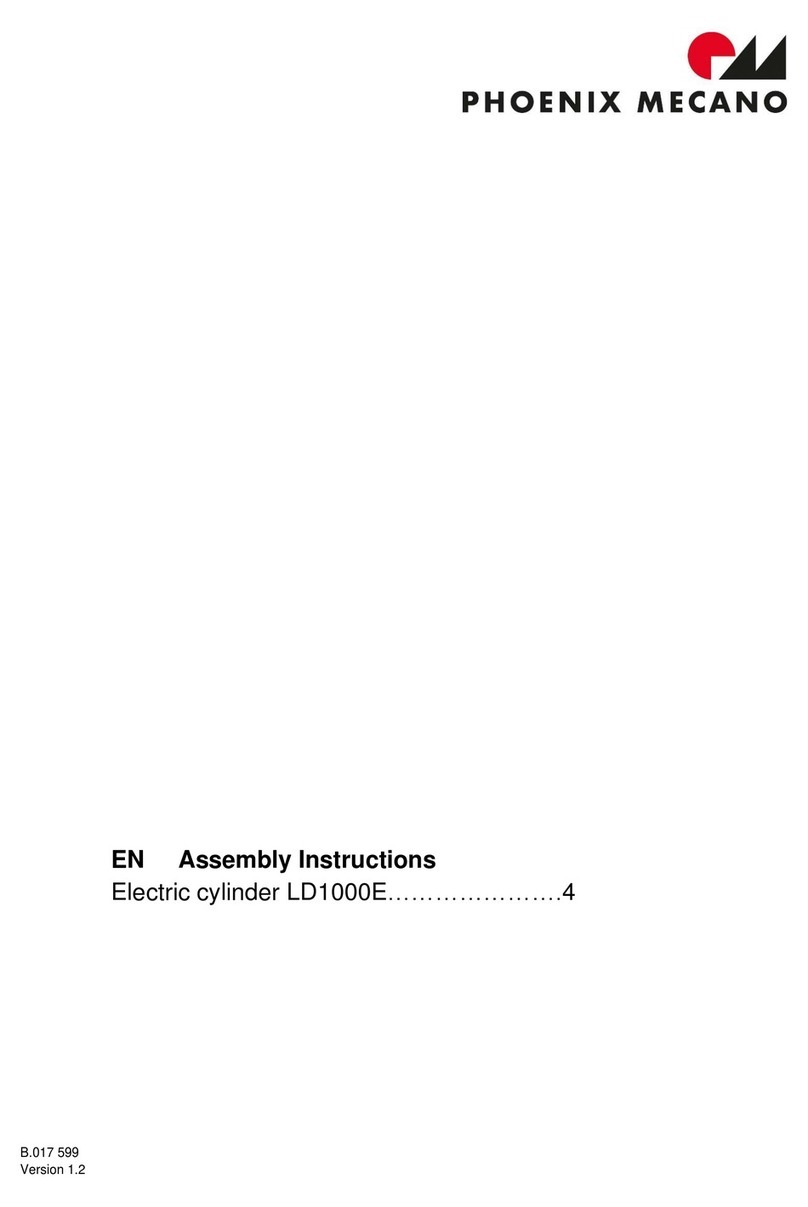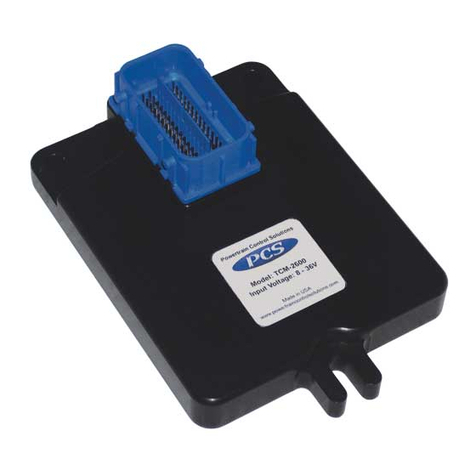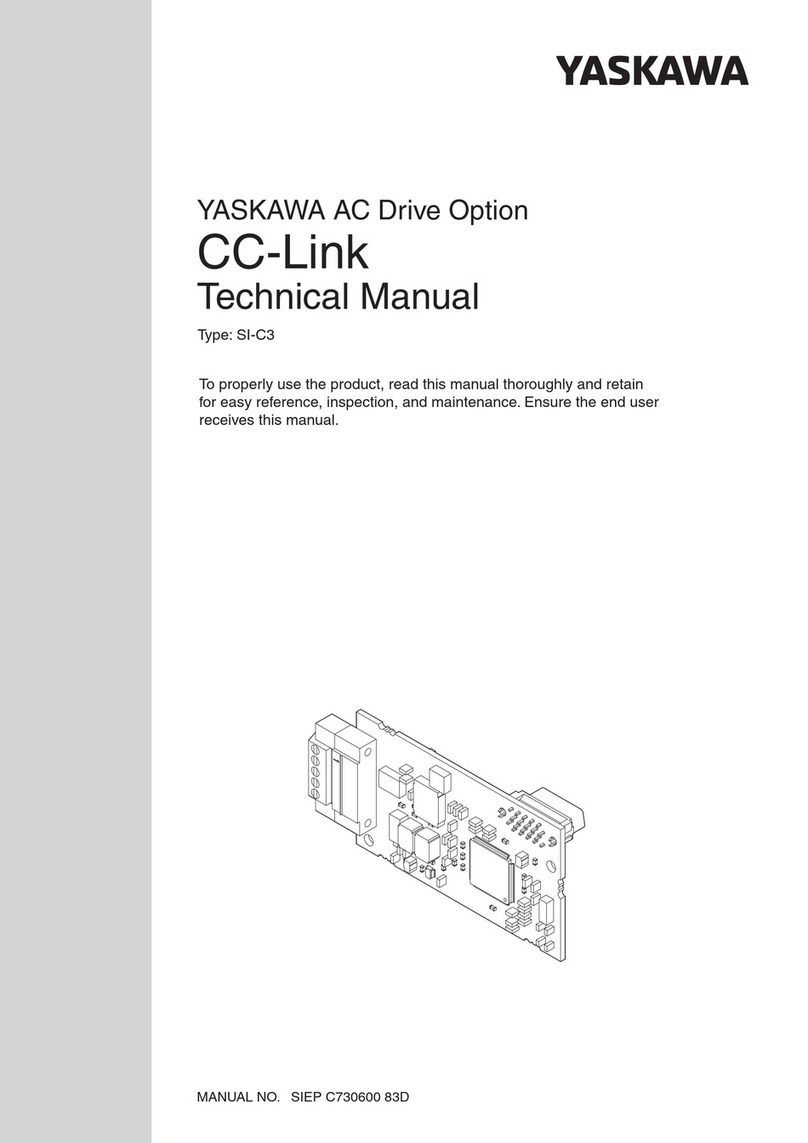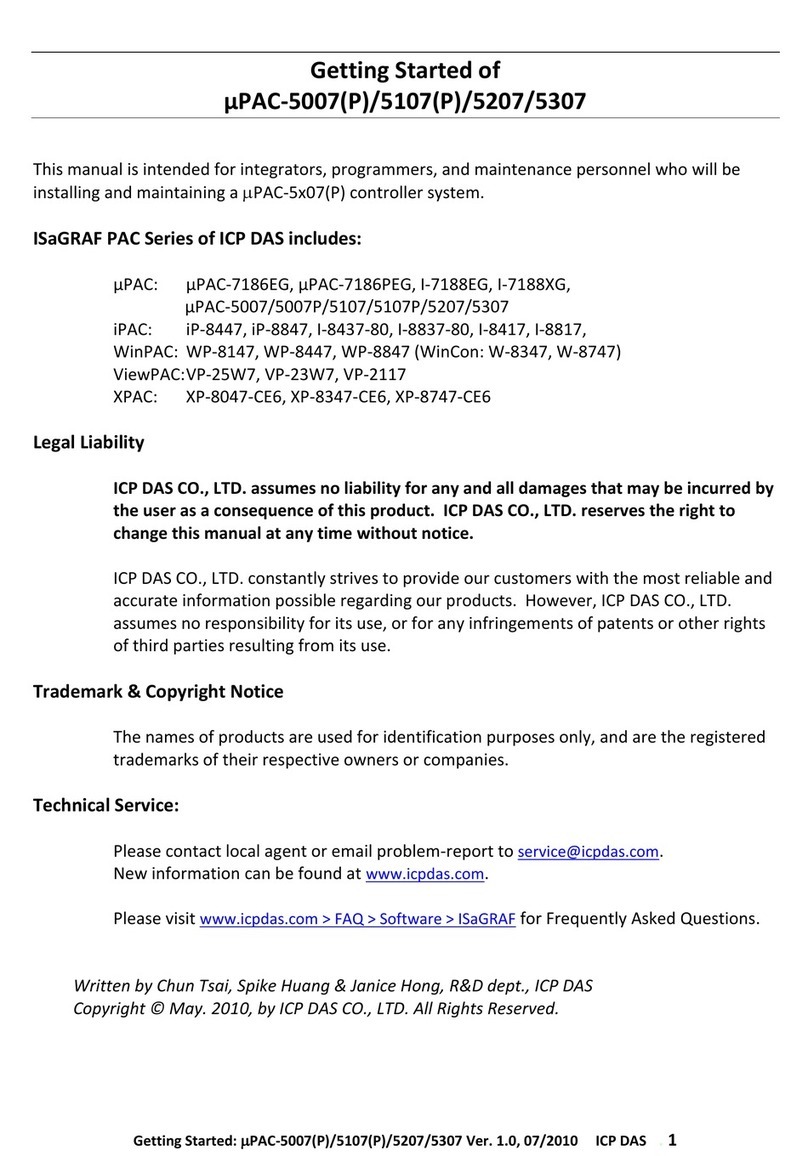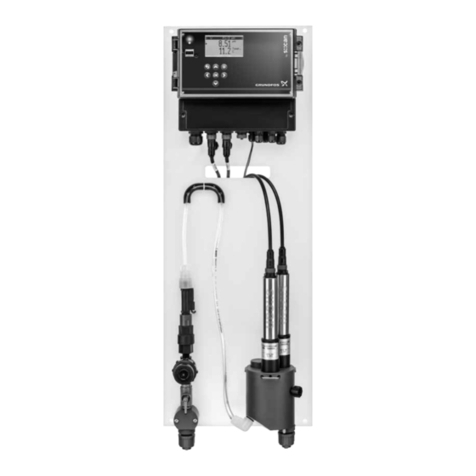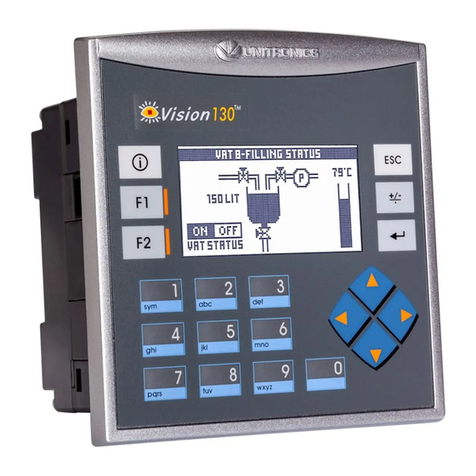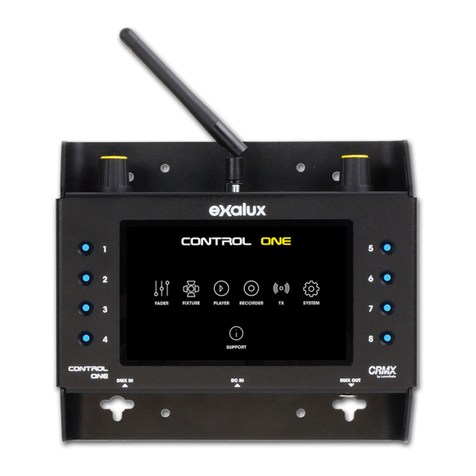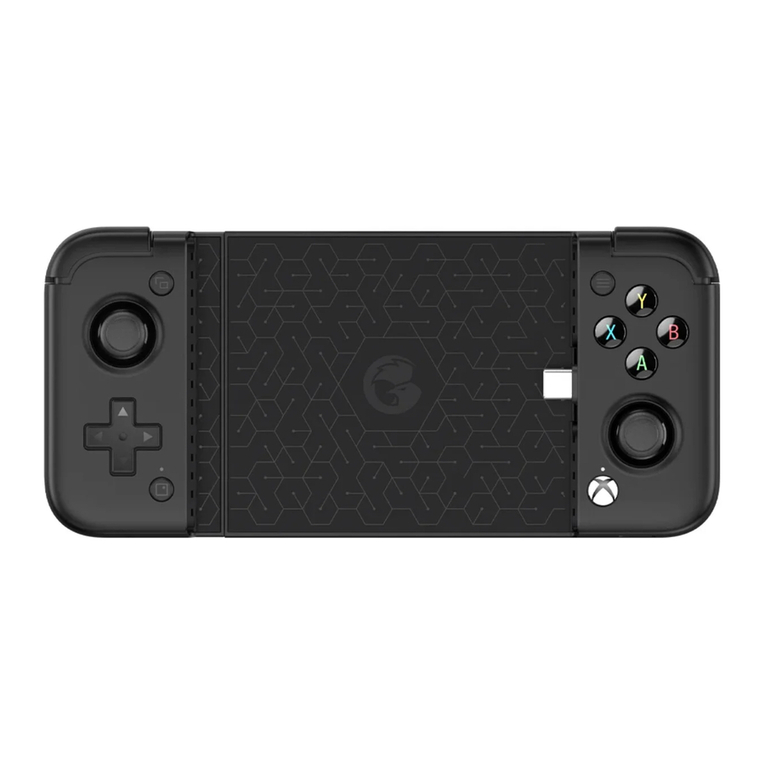DEL-AIR SR-242 User manual

User’s Guide
C.0.

SR-242 USER’S GUIDE
41D01C7 (F7) Page 2 of 2 02/04/30
Table of Contents
1. Introduction ....................................................................................................................3
2. Faceplate ..........................................................................................................................3
2.1 Parameter List ..............................................................................................................3
2.2 Parameter Buttons ( and ) .................................................................................4
2.3 Function Buttons ( and ) .............................................................................................4
2.4 LED Status Window ...................................................................................................4
2.5 Value Setting Buttons ( and )...........................................................................4
2.6 Outputs List With LEDs............................................................................................5
3. Inputs/Outputs Table .............................................................................................................6
4. Equipment ...............................................................................................................................6
5. Configuration Versions ..........................................................................................................6
6. Ventilation System Overview ................................................................................................7
7. Glossary ...................................................................................................................................7
8. Description of Parameters .....................................................................................................8
9. Alarm .....................................................................................................................................18
10. Additional Information on Parameters...........................................................................18
10.1 Clock ..........................................................................................................................18
10.2 Probe ..........................................................................................................................18
11. Supplementary Information on CI-1/24 .........................................................................19
12. Parameter Table................................................................................................................20
13. Wiring Diagram ................................................................................................................25

SR-242 USER’S GUIDE
41D01C7 (F7) Page 3 of 3 02/04/30
1. Introduction
The SR-242 is a powerful control which can be programmed to work in many types of
situations. By developing a configuration logic, the SR-242 can meet the needs of
your specific application. The configuration logic or software is the brain of the control
system, and basically makes the relation between the sensor readings, the user
adjusted parameters, and the activation or deactivation of outputs. This software is
stored in a chip identified with a configuration number, as shown in the title of this
document, and as it appears on your left hand side label of your control. Always keep
on hand this configuration number when you are contacting your dealer.
To fully understand your SR-242, it is important to read both the SR-242
Installation Guide and this User’s Guide. The Installation Guide informs you on: how
to install the control system, safety issues, warranty and many others characteristics
of the SR-242 whereas the User’s Guide is a document which explains the specific
configuration logic. This control also features limited access to parameters for
employees (referred to as the user in this document) and gives full access for the
supervisor.
Temperature units in this document are represented in both °F and °C for information
purposes only. The temperature unit programmed in your configuration is either in °F
or °C and cannot be changed.
2. Faceplate
The SR-242’s faceplate features a LED Status window, 1
parameter list, 1 outputs list with 11 LEDs, 2 function buttons
(L2 and L3), 2 parameter buttons ( and ) and 2 value
setting buttons ( and ). Below is a brief description of all
features, from left to right on the faceplate.
2.1 Parameter List
On the left-hand side of the faceplate appears a list of the
parameters programmed in the ordered configuration. Due to
limited space, not all parameters (with secondary and tertiary
functions) are listed.. All parameters that do not show up on
the parameter list can be accessed with the arrow parameter
buttons ( and ).

SR-242 USER’S GUIDE
41D01C7 (F7) Page 4 of 4 02/04/30
2.2 Parameter Buttons (and )
The parameter buttons are represented by the 2 squares with
arrows in them. Pressing the up ( ) or down arrow( ) will
move the parameter list up or down.
2.3 Function Buttons (and )
The round section buttons help users to select extra settings
which appear on the list with L2 and L3 symbols. These
settings may be accessed first by selecting the main parameter
with the parameter buttons ( and ). Whenever there is a
main parameter with only one L2, or one L3, simply press on
the L2 or L3 again to return to the main parameter or wait for
it to automatically switch to the main parameter. When the
main parameter has multiple L2, the user must scroll back to
the main parameter using the L2 button.
2.4 LED Status Window
The LED status window features a 5 digit LED readout display
of temperature in Fahrenheit or Celsius, or other
programmable settings. After a setting is selected, its value
appears on the LED display. If the value is flashing, it can be
changed with the value setting buttons ( and ).
2.5 Value Setting Buttons (and )
The value buttons appear as 2 squares with a + and - sign in
them. They are used to increase or decrease the value on the
LED window. Press the button once and release it to increase
or decrease the value by one increment. The value may be
changed quickly by keeping your finger on either button.

SR-242 USER’S GUIDE
41D01C7 (F7) Page 5 of 5 02/04/30
2.6 Outputs List With LEDs
On the right-hand side of the faceplate appear 11 LEDs (1
alarm and 10 multi-purpose outputs) next to which is a list of
10 outputs. A LED comes ON whenever the respective output
is active, in alarm or in a particular state.

SR-242 USER’S GUIDE
41D01C7 (F7) Page 6 of 6 02/04/30
,QSXWV2XWSXWV7DEOH
Inputs Qty Outputs Qty
Inside temperature 3 Variable Fan stages (can be heaters) 2 to 4
Ambient temperature 1 ON/OFF Fan stages (can be heaters) 4 to 6
Curtains 2
Inlets (Optional) 1 to 2
Alarm 1
(TXLSPHQW
Item Description Qty
SR-242 Intelligent Control, 4 inputs / 10 outputs 1
2004-1KLT Temperature Sensor (-41.8 to 74.4°C) (-43.6 to 166.2°F) blue 4
CI-1/24 ** (Optional) Cable Inlet (24 volts) 1 to 2
RM-2 (Optional) Relay module 1
VM-2 (Optional) Variable Module (10Amps) 1
** CI-1/24 version must be 110b or higher.
&RQILJXUDWLRQ9HUVLRQV
Version Date Modification
C0 01/06/14 New. (CheckSum: BDB1673E)
C0(F0) 01/02/10 Modification on output order ( CheckSum for C0: 6DF6C6F7,
CheckSum for F0: 9AEA37CE)
v1 01/11/07 Modification on Curtain #2 logic.
v2 02/01/23 - Supervisor Code added
- Tunnel Mode Delay added
- Curtain #2 Open Time added
- Modification on Sensor Select parameter
- “Percent Exhaust Fan” logic added for Cable Inlet position
- Curtains can move in tunnel mode if selected
v3 02/02/04 - Curtains position in Emergency Mode corrected
v4 02/02/08 - Output 7 & 8 on RM-2 or VM-2 Corrected
v5 02/02/20 - Curtains Modes Select changed (1 to 8)
- Tunnel Mode Delay logic changed
- Outputs Sensor Select changed
v6 02/04/26 - Stage transition while Tunnel Mode Delay modified
- Manual mode for curtains corrected
- Sensor select added for curtains
- CI-1/24 diagnostic parameter added
v7 02/04/30 - Correction on both curtains in Emergency Mode
- Curtain positions saved when respective status is “don’t move”, used to keep position
when a reset occurs.
- CI-1/24 diagnostic parameter removed
- Second CI-1/24 added
- Supervisor code changed

SR-242 USER’S GUIDE
41D01C7 (F7) Page 7 of 7 02/04/30
9HQWLODWLRQ6\VWHP2 HU LHZ
This configuration was developed for a mechanical, natural, tunnel ventilation building. All output stages
can be either heating or cooling. Stages 7 and 8 have an option to be ON/OFF stages or variable stages
or an Inlet(s) output (1 to 2). This configuration can run in 4 different modes: Mechanical, Natural, Tunnel,
Emergency. This configuration is also equipped with a Test Mode
Modes description:
Mechanical Mode is the default mode when the control is turned ON, curtains close.
Control goes in Natural Mode when the CURTAIN #1 SENSOR SELECT has reached TARGET TEMP +
CURTAIN #1 BAND. The control returns to Mechanical Mode when CURTAIN #1 SENSOR SELECT is
below TARGET TEMP + CURTAIN #1 BAND - 1.0°C and it calculates that both curtains are closed.
Control goes in Tunnel Mode when the AVERAGE TEMPERATURE has reached TARGET
TEMP +
TUNNEL
BAND. The control returns to Natural Mode when the AVERAGE TEMPERATURE drops to
TARGET
TEMP + (TUNNEL
BAND / 2), curtains respectively open for a delay equal to CURT 1 OPEN
RUNTIME and CURT 2 OPEN RUNTIME parameter.
Note: - To go in Natural Mode, Curtain #1 must be enabled for Natural Mode, otherwise no Natural Mode will be
possible
- To go in Tunnel Mode, TUNNEL BAND must not be set to OFF, otherwise no Tunnel Mode will be possible
*ORVVDU\
Throughout this document, the following terminology is used:
Target This is the Temperature goal for the room and it is also the reference temperature
for all relative settings.
On Band Number of degrees relative to the Target where an output will turn ON for relay
stages or reaches 100% for variable stages.
Off Band Number of degrees relative to the Target where an output will turn OFF for relay
stages or turn ON at minimum speed for variable stages until the respective Min
Band is reached. If the On Band is higher than the Off Band, the stage will be set
to cooling, otherwise the stage will be set to heating.
Min Band Number of degrees relative to the Target where an output of variable stage
accelerates his speed from Minimum Speed to 100% when the On Band has
been reached.
Minimum Speed This is to control the minimum speed of variable stages when the Off Band has
been reached, until the Min Band has been reached to start acceleration.
Run Time This is to set the duration time of a single movement of the curtain whether opening or
closing.
Idle Time This is to set the length of time the control waits before moving the curtains another
movement.
Fast Idle Time This is to set the length of time the control waits before moving the curtains in the
closed direction when the average room temperature is below the Target temperature.
ON / OFF Duration This is to set the timespan the output will be turned ON / OFF on a temperature
demand.

SR-242 USER’S GUIDE
41D01C7 (F7) Page 8 of 8 02/04/30
'HVFULSWLRQRI3DUDPHWHUV
ATTENTION: Expressions in ITALICS are user’s parameters whereas expressions in COURIER are
supervisor’s parameters. Supervisor’s parameters are read only or hidden for the user. Expressions in
CAPITALS are reading parameters and can not be changed with the interface.
- All the following descriptions refer to the wiring diagram at the end of this document.
- All the timers can have an imprecision of approximately 6 seconds.
- Temperature is measured in Celsius or Fahrenheit.
- Both curtains must be completely closed before downloading configuration.
- Curtain position is saved when respective curtain doesn’t move, this feature is used to keep curtain
positions when a reset occurs.
Parameter # 1 : AVERAGE TEMPERATURE
This parameter displays the average temperature. The average is made from the 3 inside temperature
sensors. Each sensor can be deactivated in this average with the AVG SENSOR SELECT parameter
setting. This parameter is displayed to the nearest 0.1° from a minimum display of -41.8°C (-43.6°F) to
maximum of 74.4°C (166.2°F).
L2: see Note 1
L3: see Note 2
Parameter # 2 : SENSOR 1
This parameter displays sensor 1 temperature. This sensor can be deactivated with the AVG SENSOR
SELECT parameter setting. This parameter is displayed to the nearest 0.1° from a minimum display of
-41.8°C (-43.6°F) to maximum of 74.4°C (166.2°F).
L2: see Note 1
L3: see Note 2
Parameter # 3 : SENSOR 2
This parameter displays sensor 2 temperature. This sensor can be deactivated with the AVG SENSOR
SELECT parameter setting. This parameter is displayed to the nearest 0.1° from a minimum display of
-41.8°C (-43.6°F) to maximum of 74.4°C (166.2°F).
L2: see Note 1
L3: see Note 2
Parameter # 4 : SENSOR 3
This parameter displays sensor 3 temperature. This sensor can be deactivated with the AVG SENSOR
SELECT parameter setting. This parameter is displayed to the nearest 0.1° from a minimum display of
-41.8°C (-43.6°F) to maximum of 74.4°C (166.2°F).
L2: see Note 1
L3: see Note 2

SR-242 USER’S GUIDE
41D01C7 (F7) Page 9 of 9 02/04/30
Parameter # 5 : AMBIENT
This parameter displays the ambient sensor temperature. This parameter is displayed to the nearest 0.1°
from a minimum display of -41.8°C (-43.6°F) to maximum of 74.4°C (166.2°F).
L2: see Note 1
L3: see Note 2
Note 1:
This parameter displays the probes which make the average. To access these readings, press L2 and the
readings of each probe will show on the LED display.
Note 2:
In addition to the sensor readout, the parameter can record the lowest and highest value reached. To
access the Hi/Lo function, press L3 of the respective SENSOR # parameter. To clear the respective Hi/Lo
values, after pressing L3, press and hold the + and - buttons until CLR appears on the LED display.
For more information on the Probe parameter, see the Additional Information on Parameters section.
Parameter # 6 : CLOCK
Gives the time in 24h format.
L2: ADJUST MINUTES
Adjust minutes for CLOCK function.
L3: ADJUST HOURS
Adjust hours for CLOCK function.
For more information on the Clock parameter, see the Additional Information on Clock section.
Parameter # 7 : TARGET TEMP
This is the temperature goal for the room and it is also the reference temperature for all relative settings.
The TARGET TEMP
is adjusted in 0.1° increments from a minimum setting of 0.0°C (32.0°F) to maximum
setting of 40.0°C (105.0°F).
L2: TUNNEL BAND
This parameter is used to set the bandwidth, which, when exceeded, changes the mode that the control is
currently in if this parameter is not set to OFF. The control returns to Natural Mode when the AVERAGE
TEMPERATURE drops to ½ of the TUNNEL BAND (if curtain #1 is enabled in natural mode). If there is no
natural mode and AVERAGE TEMPERATURE drops to ½ of the TUNNEL BAND,control goes in
mechanical mode. The TUNNEL
BAND is adjusted in 0.1° increments from a minimum setting of 0.0° to
maximum setting of 40.0°, OFF.
L3: ALARM BAND
This parameter is used to set the alarm bandwidth for a high or low temperature alarm. When the
AVERAGE TEMPERATURE is below the TARGET
TEMP - ALARM
BAND, a low temperature alarm will
occur. When the AVERAGE TEMPERATURE is above the TARGET
TEMP + ALARM
BAND, a high
temperature alarm will occur unless the AMBIENT is above the TARGET
TEMP, in which case the
AVERAGE TEMPERATURE needs to be higher than the AMBIENT + ALARM
BAND. The ALARM
BAND is
adjusted in 0.1° from a minimum setting of 0.5° to maximum setting of 40.0°.

SR-242 USER’S GUIDE
41D01C7 (F7) Page 10 of 10 02/04/30
Parameter # 8 : STAGE # (1-2, 7-8)
L2: STAGE # MIN BAND
These parameters are used to set the number of degrees from the TARGET
TEMP in which the respective
output of variable stage will accelerate from its minimum speed to its STAGE # ON BAND (cooling stage)
or will keep running at its minimum speed until the STAGE # OFF BAND has been reached (heating
stage). These settings must be between respective ON BAND and OFF BAND. These parameters are
adjusted in 0.1° increments from a minimum setting of -40.0° to a maximum setting of 40.0°.
L3: STAGE # MIN SPEED / MIN OPEN
These parameters are used to set the minimum speed of the respective output of a variable stage. If
Stage7/8 are used for an inlet(s), this parameter sets their minimum opening when the calculated result of
the “% Exhaust Fan” logic for inlet(s) opening is less than the INLET MIN BAND parameter. If Stage 7/8
are not used for an inlet(s) and STAGE # 7 MIN OPEN value setting is under 12%, this parameter will be
considerate as OFF. These parameters are adjusted in 1% increments from a minimum setting of 12%
(0% for STAGE # 7 MIN OPEN) to a maximum setting of 100%.
Parameter # 9 : STAGE # (1 to 8)
Both these settings can be either positive or negative. If STAGE # ON BAND is higher than the respective
STAGE # OFF BAND, the respective stage will be set to cooling, otherwise the stage will be set to
heating.
L2: STAGE # ON BAND
These parameters are used to set the number of degrees from the TARGET
TEMP in which the respective
output of a variable stage will reach 100% of their speed or will turn ON for a relay stage. These
parameters are adjusted in 0.1° increments from a minimum setting of -40.0° to a maximum setting of
40.0°.
L3: STAGE # OFF BAND
When the stage is set to cooling, for relay stage when temperature decreases to TARGET
TEMP + STAGE
# OFF BAND the stage will turn OFF, for a variable stage when temperature reaches TARGET
TEMP +
STAGE # OFF BAND,the stage will turn ON at their minimum speed, if temperature decreases to
TARGET
TEMP + STAGE # OFF BAND - 0.3° the stage will turn OFF. When the stage is set to heating, for
relay stage when the STAGE # OFF BAND has been reached the stage will turn OFF, for variable stage
when temperature decreases to TARGET
TEMP + STAGE # OFF BAND the stage will turn ON at their
minimum speed, if temperature increases to TARGET
TEMP + STAGE # OFF BAND + 0.3° the stage will
turn OFF. There is a differential of 0.3° for variable stages. These parameters are adjusted in 0.1°
increments from a minimum setting of -40.0° to maximum setting of 40.0°.
ex: next page

SR-242 USER’S GUIDE
41D01C7 (F7) Page 11 of 11 02/04/30
Cooling variable stage
TARGET
TEMP = 23.0°C (73.0°F)
STAGE # MIN BAND = 2.0°
STAGE # OFF BAND = 1.0°
STAGE # ON BAND = 4.0°
STAGE # MIN SPEED = 30%
Heating variable stage
TARGET
TEMP = 23.0°C (73.0°F)
STAGE # MIN BAND = -2.0°
STAGE # OFF BAND = -1.0°
STAGE # ON BAND = -4.0°
STAGE # MIN SPEED = 30%
Cooling relay stage
TARGET TEMP = 23.0°C (73.0°F)
STAGE # ON BAND = 3.0°
STAGE # OFF BAND = 2.0°
Heating relay stage
TARGET TEMP = 23.0°C (73.0°F)
STAGE # ON BAND = -3.0°
STAGE # OFF BAND = -2.0°
100%
75%
25%
50%
S
p
eed %
OFF
ON
28.0
27.0
Temp °C
26.025.024.0
23.0 Tem
p
°C
(Tem
p
°F)
23.022.021.020.019.0
18.0
On Band
Off Band
On Band
OFF
Off Band
Temp °C
Min Band
(Temp °F)
S
p
eed %
ON
100%
75%
25%
50%
Tem
p
°C
(Tem
p
°F)
28.027.026.025.024.0
23.0
On Band
Off Band
23.022.021.020.019.0
18.0
On Band
Off Band
(78.0)(77.0)(76.0)(75.0)(74.0)
(73.0)
Min Band
(
78.0
)
(
77.0
)
(
76.0
)
(
75.0
)
(
74.0
)
(73.0)
(
73.0
)
(
72.0
)
(
71.0
)
(
70.0
)
(
69.0
)
(
68.0
)

SR-242 USER’S GUIDE
41D01C7 (F7) Page 12 of 12 02/04/30
Parameter # 10 : STAGE # (1 to 8)
Theses settings are not applicable for stage 7-8 when inlet(s) is used (see parameter 23).
L2: STAGE # ON DURATION
These parameters are used to set the duration of the delay after which the respective output will be turned
ON when TARGET TEMP + STAGE # ON BAND has been reached for a relay stage and TARGET TEMP +
STAGE # OFF BAND has been reached for a variable stage. Each stage can be ON continuously if
respective STAGE # ON DURATION is set to ON. These parameters are adjusted in 1 second increments
from a minimum setting of 00:02 seconds to a maximum setting of 23:59, ON minutes.
L3: STAGE # OFF DURATION
These parameters are used to set the duration delay at which the respective output will be turned OFF
when TARGET TEMP + STAGE # ON BAND has been reached for a relay stage and TARGET TEMP +
STAGE # OFF BAND has been reached for a variable stage. These parameters are adjusted in 1 second
increments from a minimum setting of 00:02 seconds to a maximum setting of 23:59 minutes.
Parameter # 11 : STAGE # (1 to 8)
These settings are not applicable for stage 7-8 when inlet(s) is used (see parameter 23).
If both respective STAGE # ON TIME and STAGE # OFF TIME parameters are equal, the respective
output can not turn ON if it has a demand.
L2: STAGE # ON TIME
These parameters are used to establish the time that respective outputs can be activated. When the
clock is above this limit, respective output can be turned ON if it has a demand. These parameters are
adjusted in 1 minute increments from a minimum setting of 00:00 to a maximum setting of 23:59, ON
hours.
L3: STAGE # OFF TIME
These parameters are used to establish the time for which respective outputs have to stay deactivated.
When the clock is above this limit, respective output can not turn ON if it has a demand. These
parameters are adjusted in 1 minute increments from a minimum setting of 00:00 to a maximum setting of
23:59 hours
Parameter # 12 : STAGE # (1 to 8)
These settings are not applicable for stage 7-8 when inlet(s) is used (see parameter 23).
L2: STAGE # % EXHAUST FAN
These parameters are used to calculate the Inlet(s) position and curtain positions (if respective curtain is
enabled in tunnel mode). It is entered as the output’s percentage of exhaust ventilation compared with all
the exhaust fans’ ventilation combined with all the stages enabled in the current mode. If the respective
stage is set as an heater, the respective parameter STAGE # % EXHAUST FAN will not be considerate in
the calculated result of current exhaust fans’ ventilation. These parameters are adjusted in 1% increments
from a minimum of 0% to a maximum setting of 100%.

SR-242 USER’S GUIDE
41D01C7 (F7) Page 13 of 13 02/04/30
Parameter # 13 : INLET MIN BAND
This parameter is used to set the percentage of total exhaust ventilation at which the inlet(s) will start to
open. When the control is in a mode that inlet(s) is active and the percentage of exhaust fan ventilation is
below this parameter, the inlet(s) will stay at its minimum opening, otherwise inlet(s) will open
proportionally with the ventilation. This parameter is adjusted in 1% increments from a minimum of 0% to
a maximum setting of 100%.
L2: TUNNEL MODE DELAY
This parameter is used to set the time allowed for the tunnel inlet(s) to open before the cooling stages
enabled in tunnel only operate. For other cooling stages, the TUNNEL MODE DELAY will affect these
stages depending if the respective stage was enabled and running in the previous mode or not. If a
cooling stage was enabled and running in the previous mode before entering the tunnel mode and not
enabled in tunnel mode, this respective stage will run normally until the end of TUNNEL MODE DELAY, for
cooling stages that were not enabled in the previous mode and that are enabled for tunnel mode, these
stages will wait until the TUNNEL MODE DELAY is finished before starting to run. Finally, for a cooling
stage that was enabled and running in the previous mode and enabled in tunnel mode, TUNNEL MODE
DELAY will not affect this stage. The tunnel inlet(s) (and tunnel curtains if enabled) opens to the position it
will be at when the stages start to run after the delay. This parameter is adjusted in 1 second increments
from a minimum of OFF, 00:02 seconds to a maximum setting of 15:00 minutes.
STAGE 1 % EXHAUST FAN = 8%, enabled for Mechanical
STAGE 2 % EXHAUST FAN = 17%, enabled for Mechanical
STAGE 3 % EXHAUST FAN = 25%, enabled for Mechanical and Tunnel
STAGE 4 % EXHAUST FAN = 25%, enabled for Tunnel
STAGE 5 % EXHAUST FAN = 25%, enabled for Tunnel
STAGE 6 % EXHAUST FAN = 25%, output is used for heating
Since the numbers entered may not equal 100% the control will interpolate the numbers to make
them equal 100%. For example if the total is 50% it would use the double of each parameter, if
the total equaled 200%, it would use half of each parameter. The control figures out what
percentage of the mechanical ventilation is currently running.
Total Mechanical Exhaust Fans = 50%, (8% + 17% + 25%),
Stage 1 is running at 100%, stage 2 is running at 50% and stage 3 is off.
Mechanical exhaust ventilation for stage 1 = 8%, (100% * 8%),
Mechanical exhaust ventilation for stage 2 = 8.5%, (50% * 17%),
Mechanical exhaust ventilation for stage 3 = 0%, (0% * 25%),
Total mechanical exhaust ventilation running = 33%, (((8% + 8.5% + 0%) / 50%) * 100)
(16.5% / 50%) * 100
(0.165 / 0.5) * 100
0.33 * 100
33%
Parameter # 14 : STAGE #
These settings are not applicable for stage 8 when inlet(s) is used (see parameter 23).
L2: STAGE # EMERGENCY MODE
These parameters are used to establish if the respective output is enabled to run when control is in
emergency mode. If sensors 1 to 3 on the control are defective, the control will go into Emergency Mode.
When Emergency Mode is entered, curtains open at their respective position, inlet(s) opens at position set
in parameter STAGE #7 EMERGENCY MODE and then turns ON the outputs chosen here. Parameters for
stages 1, 2, 7, 8, 9 and 10 (STAGE #9 EMERGENCY MODE and STAGE #10 EMERGENCY MODE are
respectively curtain #1 and curtain #2) are adjusted in 1% from a minimum setting of OFF, 12% to a
maximum setting of 100%. Parameters for stages 3 to 6 can be set to OFF or ON.

SR-242 USER’S GUIDE
41D01C7 (F7) Page 14 of 14 02/04/30
Parameter # 15 : CURTAIN #1 BAND
This parameter is used to set the number of degrees from the TARGET
TEMP that the control change from
Mechanical Mode to Natural Mode. When TARGET
TEMP + CURTAIN #1 BAND has been reached,
curtain 1 will open 1 time during CURTAIN #1 RUNTIME, after that opening, if AVERAGE
TEMPERATURE stays within TARGET
TEMP + CURTAIN #1 BAND - 1.0° and TARGET
TEMP + CURTAIN
#1 BAND + 1.0°, curtain doesn’t move. When CURTAIN #1 SENSOR SELECT reaches TARGET
TEMP +
CURTAIN #1 BAND + 1.0°, curtain 1 (and 2 if TARGET TEMP +
CURTAIN #2 BAND
has already been
reached) will open on a respective cycle. The CURTAIN #1 BAND is adjusted in 0.1° from a minimum
setting of 0.0° to a maximum of 40.0°.
L2: CURTAIN #2 BAND
This parameter is used to set the number of degrees from the TARGET
TEMP that the curtain 2 will follow
CURTAIN #1 BAND for open or close on its respective cycle. This mean that when TARGET
TEMP +
CURTAIN #2 BAND has been reached, when CURTAIN #1 SENSOR SELECT is equal or higher than
TARGET
TEMP + CURTAIN #1 BAND + 1.0°, curtain 2 opens on a cycle, when AVERAGE
TEMPERATURE is equal or less than TARGET
TEMP + CURTAIN #1 BAND - 1.0°, curtain 2 closes on a
cycle, otherwise curtain 2 doesn’t move. The CURTAIN #2 BAND is adjusted in 0.1° from a minimum
setting of 0.0° to a maximum setting of 40.0°.
Parameter # 16 : CURTAIN #1 RUNTIME
This parameter is used to set the running time to open or close curtain 1. When control is in Natural Mode
and there is a cycled closing demand, curtain 1 will close during CURTAIN #1 RUNTIME and will wait for
a period of time (CURTAIN #1 IDLE or CURTAIN #1 FAST IDLE) before it restarts to close curtain 1.
Similar logic is used for a cycled opening demand, curtain 1 will open during CURTAIN #1 RUNTIME and
will wait for a period of time before it restarts to open curtain 1. Curtain 1 can open or close continuously if
this parameter is set to OFF. The CURTAIN #1 RUNTIME is adjusted in 1 second from a minimum
setting of OFF, 00:03 seconds to a maximum setting of 15:00 minutes.
L2: CURTAIN #1 IDLE
This parameter is used to set the time that the curtain 1 waits during a cycled opening or closing demand
if AVERAGE TEMPERATURE is above TARGET
TEMP. The CURTAIN #1 IDLE is adjusted in 1 second
from a minimum setting of 00:00 second to a maximum setting of 15:00 minutes.
L3: CURTAIN #1 FAST IDLE
This parameter is used to set the time that the curtain 1 waits during a cycled closing demand if
AVERAGE TEMPERATURE is below TARGET
TEMP. The CURTAIN #1 FAST IDLE is adjusted in 1
second from a minimum setting of 00:00 second to a maximum setting of 15:00 minutes.
Parameter # 17 : CURTAIN #2 RUNTIME
This parameter is used to set the running time to open or close curtain 2. When control is in Natural Mode
and TARGET
TEMP + CURTAIN #2 BAND has been reached and there is a cycled closing demand, curtain
2 will close during CURTAIN #2 RUNTIME and will wait for a period of time (CURTAIN #2 IDLE or
CURTAIN #2 FAST IDLE) before it restarts to close curtain 2. Similar logic for a cycled opening
demand, curtain 2 will open during CURTAIN #2 RUNTIME and will wait for a period of time before it
restarts to open curtain 2. Curtain 2 can open or close continuously if this parameter is set to OFF. The
CURTAIN #2 RUNTIME is adjusted in 1 second from a minimum setting of OFF, 00:03 seconds to a
maximum setting of 15:00 minutes.

SR-242 USER’S GUIDE
41D01C7 (F7) Page 15 of 15 02/04/30
L2: CURTAIN #2 IDLE
This parameter is used to set the time that the curtain 2 waits during a cycled opening or closing demand
if AVERAGE TEMPERATURE is above TARGET
TEMP. The CURTAIN #2 IDLE is adjusted in 1 second
from a minimum setting of 00:00 second to a maximum setting of 15:00 minutes.
L3: CURTAIN #2 FAST IDLE
This parameter is used to set the time that the curtain 2 waits during a cycled closing demand if
AVERAGE TEMPERATURE is below TARGET
TEMP. The CURTAIN #2 FAST IDLE is adjusted in 1
second from a minimum setting of 00:00 second to a maximum setting of 15:00 minutes.
Parameter # 18 : CURT 1 OPEN RUNTIME
This parameter is used to set the total time it takes to fully open the curtain #1 from a closed position. This
setting is used to fully open curtain #1 during a delay equal to this parameter when control changes modes
from Tunnel Mode to Natural Mode. The CURT 1 OPEN RUNTIME is adjusted in 1 second from a
minimum setting of 00:00 second to a maximum setting of 23:59 minutes.
L2: CURT 2 OPEN RUNTIME
This parameter is used to set the total time it takes to fully open the curtain #2 from a closed position. This
setting is used to fully open curtain #2 during a delay equal to this parameter when control changes modes
from Tunnel Mode to Natural Mode. The CURT 2 OPEN RUNTIME is adjusted in 1 second from a
minimum setting of 00:00 second to a maximum setting of 23:59 minutes.
Parameter # 19 : TEST MODE (0 = Pause)
This parameter is used to test each output. If this parameter is set to ON, control will test each output by
cycling sequences starting at sequence set in TEST MODE SEQUENCE # parameter. If this parameter is
set from OFF to 0, control will continuously test the sequence set in TEST MODE SEQUENCE
#
, if it is set
from ON to 0, control will pause the sequence where the control was cycling. When Test Mode is cycling,
control will test sequences from 1 to 16 for a delay of 10 seconds, for the curtains sequences (17 to 24),
control will test these sequences for a delay of 20 seconds. The TEST
MODE can be set to OFF, 0 (Pause)
or ON.
L2: TEST MODE SEQUENCE #
This parameter is used to set the sequence number to start cycling test mode or to continuously test if
TEST
MODE is set from OFF to 0. After changing this setting, wait for about 5 seconds for the change to
take effect before testing new sequence. This parameter can be set from 1 to 24.
Test Mode sequences:
1) Alarm ON
2) Alarm OFF
3) Stage 1 (Variable) at 40%
4) Stage 1 (Variable) ON
5) Stage 1 (Variable) OFF
6) Stage 2 (Variable) at 40%
7) Stage 2 (Variable) ON
8) Stage 2 (Variable) OFF
9) Stage 3 (Relay) ON
10)
Stage 3 (Relay) OFF
11)
Stage 4 (Relay) ON
12)
Stage 4 (Relay) OFF
13) Stage 5 (Relay) ON
14)
Stage 5 (Relay) OFF
15)
Stage 6 (Relay) ON
16)
Stage 6 (Relay) OFF
17)
Curtain 1 Open (20 sec.)
18)
Curtain 1 Stop (20 sec.)
19)
Curtain 1 Close (20 sec.)
20)
Curtain 1 Stop (20 sec.)
21)
Curtain 2 Open (20 sec.)
22)
Curtain 2 Stop (20 sec.)
23)
Curtain 2 Close (20 sec.)
24)
Curtain 2 Stop (20sec.)

SR-242 USER’S GUIDE
41D01C7 (F7) Page 16 of 16 02/04/30
Parameter # 20 : SUPERVISOR MODE (ACCESS TO PROTECTED PARAMETER)
When the supervisor mode is ON, this means that the user has full access (SUPERVISOR ON) to
all adjustable parameters. In other words, all parameters which are adjustable by the user,
including the protected parameters, will be visible and flashing.
When the supervisor mode is OFF, this means that the user does not have full access
(SUPERVISOR OFF) to all adjustable parameters. In other words, if certain parameters are
hidden in the supervisor mode, they will remain invisible to the user, and the parameters protected
by the supervisor code will not flash, indicating that no modification can be performed on these
parameters.
Su: ON = SUPERVISOR ON
Su:OFF=SUPERVISOR OFF
To alter the supervisor mode, follow the code entry procedure indicated below:
SUPERVISOR CODE: 1 1 1
1. The LED display of this parameter show if the supervisor is SUPERVISOR ON (Su:
ON) or SUPERVISOR OFF (Su: OFF).
2. To change the state of the supervisor mode, press L2 button. The LED display will
shows “1: 00”, at this moment, enter the first number of the supervisor code;
3. press L2 again, the LED display will shows “2: 00”, at this moment, enter the second
number of the supervisor code;
4. press L2 again, the LED display will shows “3: 00”, at this moment, enter the third
number of the supervisor code;
5. finally, press L3 to valid the code entered.
6. If the code entered is incorrect, “ERR” will appear on the LED display. At this point,
verify the supervisor code and retry the code entry procedure.
Parameter # 21 : STAGE #
L2: STAGE # MODES
These parameters are used to establish the modes that respective output is enabled to run in. The modes
are Mechanical, Natural and Tunnel. Respective output will only run if the temperature, timer and clock
was in state to run and the mode was set to the current mode the control is operating in. These
parameters can be set from 1 to 8.
Modes:
1) Enabled to run in Mechanical Mode only *
2) Enabled to run in Natural Mode only
3) Enabled to run in Tunnel Mode only
4) Enabled to run in Mechanical and Natural Modes *
5) Enabled to run in Mechanical and Tunnel Modes *
6) Enabled to run in Natural and Tunnel Modes
7) Enabled to run in All modes *
8) Disabled
* These settings are not applicable for both curtains, if a curtain mode select is set to these options, then
the respective curtain mode select will be considerate as Disabled.

SR-242 USER’S GUIDE
41D01C7 (F7) Page 17 of 17 02/04/30
Parameter # 22 : STAGE #
L2: STAGE # SENSOR SELECT
These parameters are used to establish the temperature that controls respective output. These
parameters can be set from 1 to 9. STAGE # 9-10 SENSOR SELECT are settings for curtain 1 and
curtain 2 respectively.
Outputs Sensor Select Modes:
1) SENSOR 1
2) SENSOR 2
3) SENSOR 3
4) SENSOR 1 & 2
5) SENSOR 1 & 3
6) SENSOR 2 & 3
7) ALL SENSORS
8) AVERAGE TEMPERATURE
9) AMBIENT SENSOR
Parameter # 23 : STAGE 7/8 OPTION
This parameter is used to establish the output type for stages 7 and 8. Stages 7 and 8 can be either relay
or variable stages, output can also be used for an inlet(s). If this parameter is set to 0 then stages 7 and 8
will be used as ON/OFF stages. If this parameter is set to 1 then stages 7 and 8 will be used as variable
stages. If this parameter is set to 2 then outputs will be used for inlet(s).
L2: AVG SENSOR SELECT
This parameter is used to establish the temperature that controls AVERAGE TEMPERATURE parameter.
This parameter can be set from 1 to 7.
Average Temperature Sensor Select Modes:
1) SENSOR 1
2) SENSOR 2
3) SENSOR 3
4) SENSOR 1 & 2
5) SENSOR 1 & 3
6) SENSOR 2 & 3
7) ALL SENSORS
Parameter # 24 : SOFTWARE VERSION
This parameter is used to display the configuration version.

SR-242 USER’S GUIDE
41D01C7 (F7) Page 18 of 18 02/04/30
9. $ODUP
The alarm relay is normally activated, but it will deactivate 26 sec or more after one of the following
events occurred:
a. SR-242 loses its power or is defective.
b. The AVERAGE TEMPERATURE exceeds the limits ALARM BAND (other conditions,
see parameter 7).
c. A sensor in is unplugged or defective.
Note: If an inside temperature sensor becomes defective (open / short circuit or unplugged),
the control will not compute this sensor for average temperature and the readout of this sensor
will be ERR.
$GGLWLRQDO,QIRUPDWLRQRQ3DUDPHWHUV
The following is a more detailed description of general purpose parameters which may or may not be
included in your configuration. The other parameters, which are easier to set, are briefly explained in the
section “Description of Parameters”.
10.1 Clock
The SR-242 comes with its own integrated time clock. This feature is appreciated by users who want to
know the current time of day. Note that if a power failure occurs, the clock will keep the time at which the
failure occurred. However, the time clock’s main purpose is to allow ramping and feed and water
consumption monitoring, as these events occur every 24 hours or at midnight each day.
The following instructions show how to change the time of day on the control:
The time is displayed in HH:MM format and does not flash. The and buttons serve no purposes.
L2: Minutes are flashing and can be adjusted with the and buttons.
L3: Hour is flashing and can be adjusted with the and buttons.
10.2 Probe
The following instructions show how to read the current sensor readings as well as the recorded high and
low.
The probe’s average value is displayed and does not flash. The and buttons serve no purposes. If
the gap between the recorded values is too great, the
Err
message will be displayed.
L2: Display a probe individual value. If there is more than one sensor, another sensor is displayed every
second. After 60 seconds, the parameter returns to the average.
L3: Display the recorded high and low. Press simultaneously the and buttons for 2 seconds to clear
the high and low. The
Clr
message appears for 2 seconds to confirm the clearing. Then, after 60
seconds, the parameter returns to the average.

SR-242 USER’S GUIDE
41D01C7 (F7) Page 19 of 19 02/04/30
11. 6XSSOHPHQWDU\,QIRUPDWLRQRQ&,
The air inlet(s) is equipped with a CI-1/24. A system with a CI-1/24 offers features such as:
-capability of self-operating the inlet(s) if the CI-1/24 loses contact with SR-242. Equipped with an inside
temperature probe, the CI-1/24 uses a range of preset temperature and a temperature-inlet(s) position
curve in order to control the openings. For this configuration, CI-1/24 will operate the inlet(s) or curtains in
backup as follow:
• below TARGET
TEMP +
STAGE 7 MIN, inlet(s) will open at position STAGE 7 MIN
OPEN
.
(
TARGET
TEMP and
STAGE 7 MIN OPEN is given by SR-242 before the
failure)
• equal to or above TARGET
TEMP, inlet(s) will modulate from the STAGE 7 MIN OPEN
to 100%
.
-can be used in either a time mode or in a potentiometer mode. If potentiometer mode has been chosen,
and the feedback is defective, the CI-1/24 automatically switches to time mode, thus allowing normal
operation until the problem is solved.
The following is a list of conditions that generate CI-1/24 malfunction:
- CI-1/24 temperature probe is defective,
- feedback potentiometer is either open or short circuit,
- Inlet(s) is moving the wrong way,
- Inlet(s) is blocked and/or miscalibrated.
If one of these conditions occurs for more than 5 minutes, no alarm will sound. The CI-1/24 will try to
continue to operate normally.
The following is a list of conditions that make the CI-1/24 to fall on backup mode:
- Communication link between SR-242 and the CI-1/24 is open,
- SR-242 is not powered.
If one of these conditions occurs for more than 5 minutes, no alarm will sound. The CI-1/24 will fall on
backup mode 30 seconds after the condition has occured.
Notes: - To completely close the inlet(s) in backup mode, the user must use the manual mode
of the CI-1/24.
- If the CI-1/24 has never correctly communicated with the SR-242 since its first
power up, the backup mode won't work correctly.
- The CI-1/24 must be correctly calibrated before using this configuration. (refer to
CI-1/24 for the calibrating procedures).

SR-242 USER’S GUIDE
41D01C7 (F7) Page 20 of 20 02/04/30
3DUDPHWHU7DEOH
DESCRIPTION CONTROL VALUES
*Restriction MIN MAX PRESET
1. AVERAGE TEMPERATURE °C(°F) -41.8 (-43.6) 74.4 (166.2) ***** *****
L2: Sensor °C(°F) -41.8 (-43.6) 74.4 (166.2) PRB 2-3-4 *****
L3: Hi/Lo °C(°F) CLR -41.8 (-43.6) 74.4 (166.2) ***** *****
2. SENSOR 1 °C(°F) -41.8 (-43.6) 74.4 (166.2) ***** *****
L2: Sensor °C(°F) -41.8 (-43.6) 74.4 (166.2) PRB 2 *****
L3: Hi/Lo °C(°F) CLR -41.8 (-43.6) 74.4 (166.2) ***** *****
3. SENSOR 2 °C(°F) -41.8 (-43.6) 74.4 (166.2) ***** *****
L2: Sensor °C(°F) -41.8 (-43.6) 74.4 (166.2) PRB 3 *****
L3: Hi/Lo °C(°F) CLR -41.8 (-43.6) 74.4 (166.2) ***** *****
4. SENSOR 3 °C(°F) -41.8 (-43.6) 74.4 (166.2) ***** *****
L2: Sensor °C(°F) -41.8 (-43.6) 74.4 (166.2) PRB 4 *****
L3: Hi/Lo °C(°F) CLR -41.8 (-43.6) 74.4 (166.2) ***** *****
5. AMBIENT °C(°F) -41.8 (-43.6) 74.4 (166.2) ***** *****
L2: Sensor °C(°F) -41.8 (-43.6) 74.4 (166.2) PRB 1 *****
L3: Hi/Lo °C(°F) CLR -41.8 (-43.6) 74.4 (166.2) ***** *****
6. CLOCK 00:00 23:59 00:00
L2: Adjust Minutes min 00 59 00
L3: Adjust Hours hr 00 23 00
7. TARGET TEMP °C(°F) 0.0 (32.0) 40.0 (105.0) 20.0 (70.0)
L2: Tunnel Band °C(°F) 0.0 40.0, OFF OFF
L3: Alarm Band °C(°F) 0.5 40.0 10.0 (20.0)
8. STAGE #
L2(1): Stage #1 Min Band °C(°F) -40.0 40.0 0.5
L3(1): Stage #1 Min Speed % 12 100 35
L2(2): Stage #2 Min Band °C(°F) -40.0 40.0 2.5
L3(2): Stage #2 Min Speed % 12 100 35
L2(3-6): N/A
L3(3-6): N/A
L2(7): Stage #7 Min Band °C(°F) -40.0 40.0 5.5
L3(7): Stage #7 Min Speed / Min Open % 0 100 35
L2(8): Stage #8 Min Band °C(°F) -40.0 40.0 6.5
L3(8): Stage #8 Min Speed % 12 100 35
Table of contents
Popular Controllers manuals by other brands
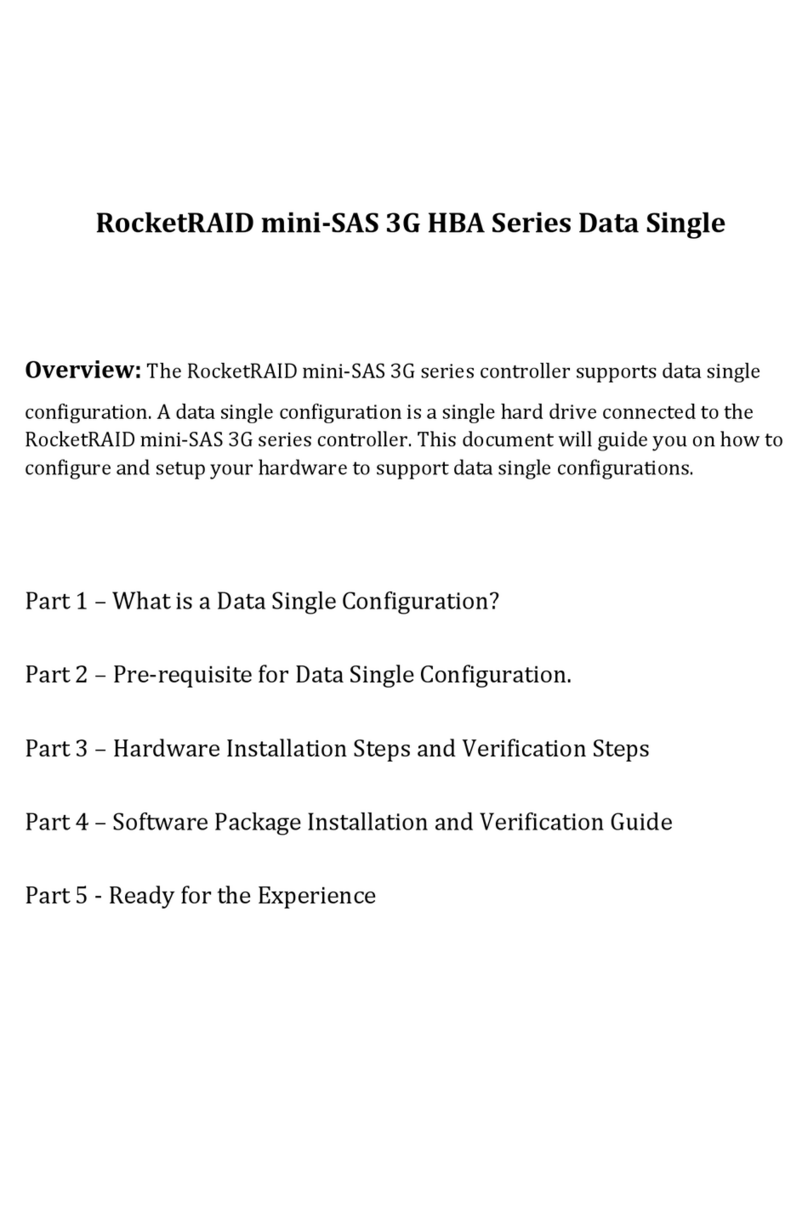
HighPoint
HighPoint RocketRAID mini SAS 3G HBA Series installation guide
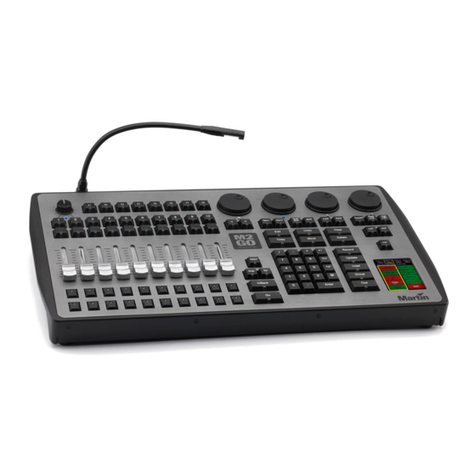
Martin
Martin M2GO quick start guide
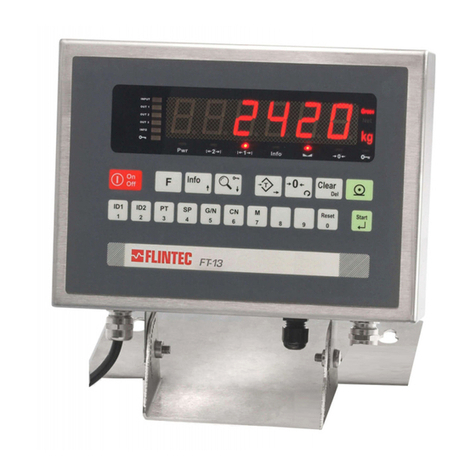
Flintec
Flintec FT-13 Technical manual
Inficon
Inficon CU1000 Translation of the original instructions
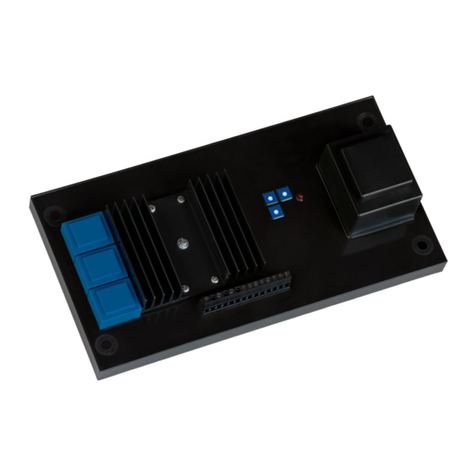
Power Electronics
Power Electronics NISHISHIBA VZRAB-1S user manual
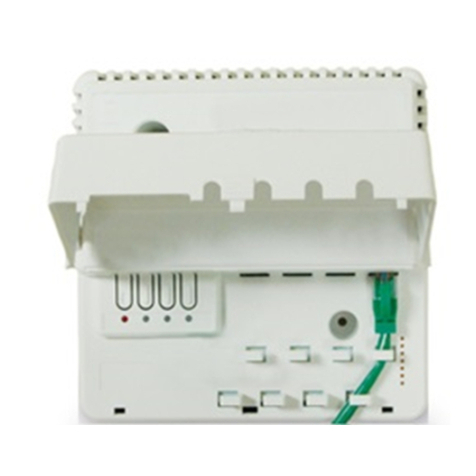
LEGRAND
LEGRAND Wattstopper LMPL-201 quick start guide
